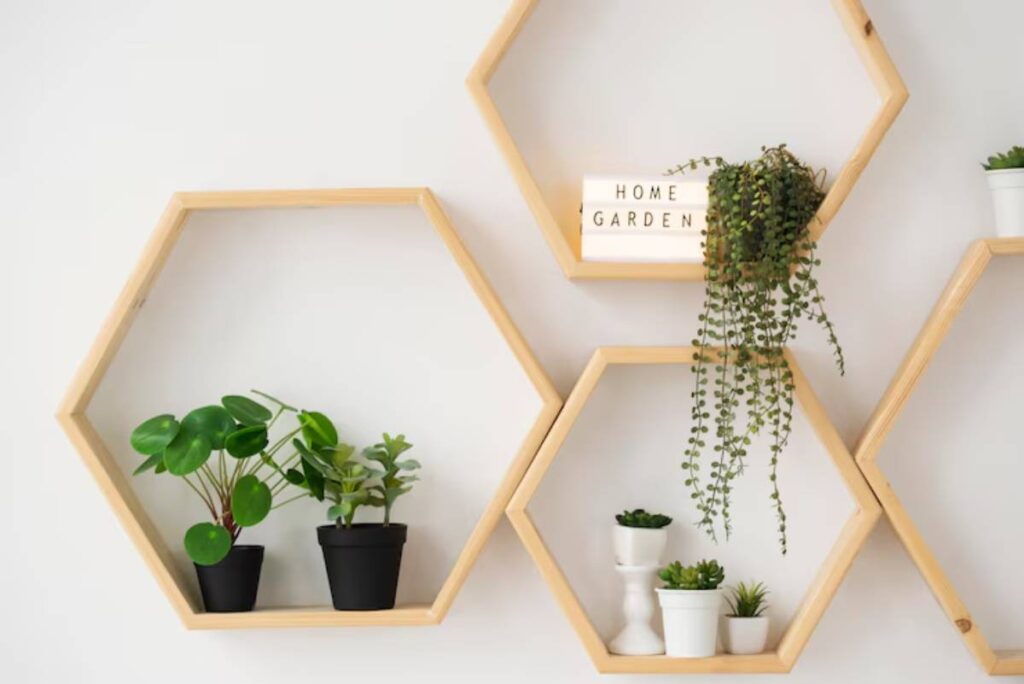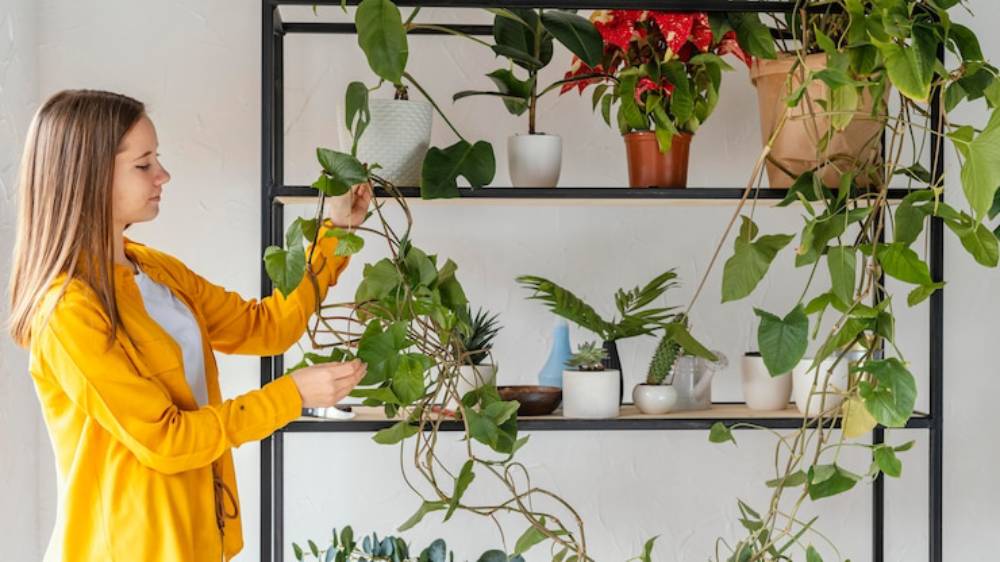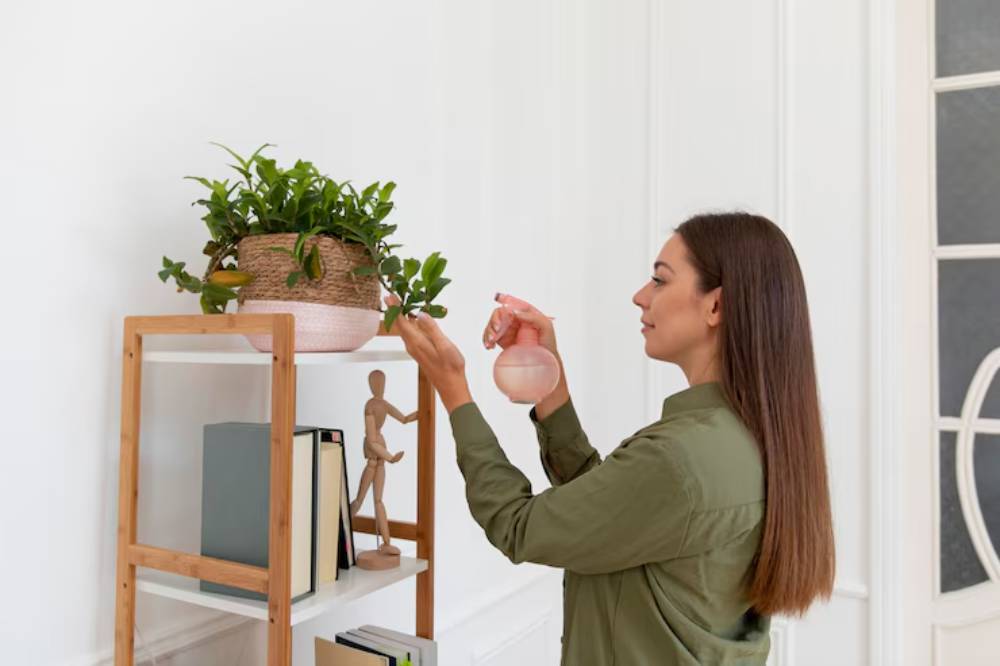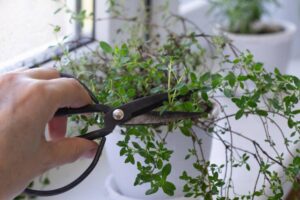The Interior Blog

Styling Floating Shelves with Indoor Plants
Floating shelves are no longer just for books and trinkets. In recent years, they’ve become a go-to design tool for people looking to introduce texture, colour, and vibrancy into their interiors, without overwhelming limited space. And what better way to breathe life into those ledges than with a cascade of green?
Whether you live in a compact city flat or a spacious home, styling indoor plants on floating shelves is a smart and beautiful way to bring nature indoors. But it’s not just about plonking a potted fern next to a photo frame. Creating well-balanced, cohesive vertical green decor takes a little planning and a few thoughtful touches.
In this guide, we’ll show you how to curate a plant-filled shelf setup that feels intentional, lush, and alive. You’ll discover plant suggestions, styling tricks, layout ideas, and safety tips — everything you need to confidently design floating shelf greenery that’s both stylish and practical.
Why floating shelf greenery works in every home
Maximises vertical space
Floating shelves allow you to go vertical, which is a game changer if you’re short on floor space or aiming for a minimalist layout.
Adds natural texture and warmth
Plants soften hard lines and bring organic form into modern interiors. They’re an easy, inexpensive way to add personality without clutter.
Boosts mood and well-being
Studies consistently show that indoor greenery reduces stress and improves focus. Floating plant shelves combine mental health benefits with aesthetic flair.
Customisable to any room
From bathrooms and kitchens to living rooms and bedrooms, floating shelves adapt to any space, and so do your plant choices.
Choose the right shelves for your space
Before you get into greenery, your shelf game needs to be solid — literally and stylistically.
Material and weight capacity matter
Choose sturdy materials that can bear the weight of pots, water, and soil.
Best choices include:
- Solid wood (rustic or painted)
- Metal and wood combinations (industrial look)
- MDF or plywood with wall anchors (budget-friendly)
Avoid: Glass or lightweight plastic for heavier greenery setups.
Shelf depth and spacing
Shallower shelves (10–15 cm) work well for smaller pots or wall vases. For bigger plants or layering objects, opt for 20–25 cm deep shelves.
Spacing tip: Allow at least 30–40 cm between shelves for upright or trailing growth.
Pick the best indoor plants for shelf styling
Not every plant thrives on a shelf. You need species that are compact, lightweight, and happy with indirect light.
Top-shelf styling plants:

Trailing plants:
- Pothos (Epipremnum aureum): Fast-growing and dramatic; great for waterfall effects.
- String of Pearls (Senecio rowleyanus): Striking and delicate; loves bright light.
- Spider Plant (Chlorophytum comosum): Easy-care and non-toxic; perfect for bathrooms or kitchens.
- English Ivy (Hedera helix): Works in cooler areas; great for framing shelves.
Compact upright plants:
- Peperomia: Small, sculptural leaves; works in pairs or mixed groups.
- Fittonia (Nerve Plant): Adds a pop of colour; ideal for partial shade areas.
- Snake Plant (Sansevieria): Hardy and stylish; best for modern décor (keep out of reach of pets).
- ZZ Plant: Glossy and architectural; perfect for low-light corners.
Air-purifying options:
- Boston Fern: Fluffy texture; thrives in humid spots like bathrooms.
- Prayer Plant (Maranta): Moves with light; great conversation starter.
Want more safe ideas? Our article on the top 10 indoor plants safe for cats, dogs, and kids lists beautiful options that pose no risk to curious paws or hands.
Plan your layout for flow and visual balance
Think of your shelf as a mini art installation — your plants should work together as a unified composition.
Styling principles to follow:
1. The rule of thirds
Visually divide your shelf into thirds, and place key plants or decor at those points for natural balance.
2. Layer heights
Combine tall, mid-height, and trailing plants for depth. Use small risers or stacked books to vary elevation.
3. Odd-numbered groupings
Group items in threes or fives for a dynamic, natural feel. Mix leafy plants with objects like candles or sculptures.
4. Symmetry vs asymmetry
Symmetrical arrangements feel formal and neat. Asymmetrical layouts are more relaxed and bohemian.
5. Keep some white space
Give your plants room to breathe and grow. Avoid overcrowding, especially on narrow shelves.
For more height-based styling tips, read our detailed guide on layering heights to create visual balance with plants.
Mix plant textures, colours, and containers
Your shelf will shine if you vary leaf shapes, tones, and pot designs.
Leaf variety tips:
- Pair broad, glossy leaves (like a ZZ plant) with fine trailing foliage (like string of hearts).
- Mix dark greens with variegated patterns or pale foliage for contrast.
- Include a touch of colour — red-tinted calatheas or pink nerve plants add flair.
Pot styling tips:
- Use neutral planters (white, grey, terracotta) for a Scandinavian look.
- Go for patterned or colourful pots in boho or eclectic rooms.
- Match pot colours or finishes across shelves to tie everything together.
Light, water, and maintenance considerations
Plants on shelves can sometimes get overlooked when it comes to care, especially those out of reach.
Lighting
- Place shelves near east- or north-facing windows for consistent light.
- Avoid direct sunlight unless you’re growing succulents or cacti.
- Use clip-on grow lights for darker corners.
Watering

- Water plants over the sink or use a long-spout watering can to avoid spills.
- Add pebble trays or coasters beneath pots to catch excess moisture.
- For convenience, group plants with similar water needs on the same shelf.
General care
- Rotate plants every few weeks for even growth.
- Dust leaves regularly to keep them photosynthesising properly.
- Prune dead leaves and trim vines to maintain neat shapes.
Creative floating shelf greenery themes
Inject personality into your plant displays by creating themed shelf setups:
1. Botanical Library
Pair your greenery with a selection of plant-related books, wooden decor, and vintage-style planters.
2. Wellness Corner
Use calming green plants with wellness accessories like essential oil diffusers, candles, and crystals.
3. Colour Pop Wall
Pick plants with colourful foliage and pots in a coordinating colour palette. Use accents like neon signs or vibrant artwork.
4. Kitchen Herb Wall
Grow herbs like basil, mint, and thyme in sunny kitchen shelves. Stylish and useful.
5. Minimalist Oasis
Stick to monochrome pots and a few sculptural plant shapes. Leave space for negative space to keep the look clean and uncluttered.
Pet and child safety tips for shelf styling
Not all plants are safe for all households.
Here are tips to keep your floating shelf greenery worry-free:
- Place higher shelves out of reach of curious children or pets.
- Avoid toxic plants like pothos or philodendron in accessible areas.
- Secure heavy pots firmly so they don’t tip over.
- Keep cords from grow lights or hanging pots neatly tucked away.
Shelf styling mistakes to avoid
Avoid these common pitfalls when designing your floating plant shelf:
- Overcrowding: Leaves no room for growth or airflow.
- Ignoring light needs: Not all plants thrive in the same conditions.
- Mismatched pots: Too many styles clash visually.
- Unstable mounting: Always check the weight limit before placing heavy pots.
Conclusion: Let your walls come to life with layered green beauty
Floating shelves provide the perfect stage to showcase your indoor plants in a stylish, space-saving way. Whether you’re a plant beginner or a seasoned collector, these vertical green zones offer endless creative potential.
By mixing textures, layering heights, and choosing plants with care, you can turn blank walls into vibrant green canvases that uplift your home and mood alike. And the best part? You can update them anytime — swapping plants, restyling pots, and refreshing accessories to keep things inspiring year-round.
Ready to try it? Start with one shelf, three plants, and your favourite pot collection. Then share your floating shelf styling story with us — we’d love to see how your greenery grows.









